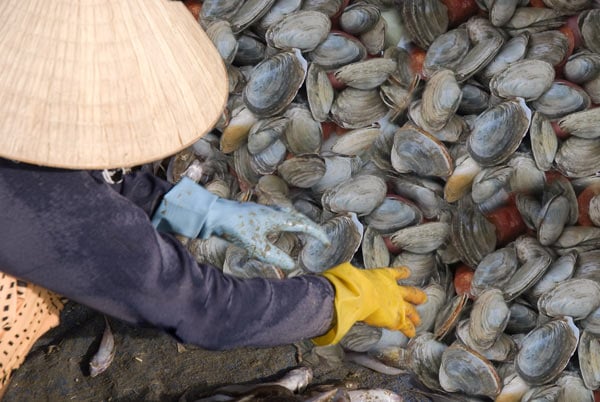Ancient clam farming is superior to modern day methods
A new study published in the journal PLOS ONE, has revealed that indigenous people in Canada had superior ways for harvesting clams and molluscs compared to methods used today. Their ancient method, which involved building rock-walled terraces known as clam gardens, produced four times as many clams than natural beaches. The study authors claim the method could be used to nurture today’s food security.
Humans have been altering and managing marine and terrestrial ecosystems for millennia. Today we see massive declines in key marine species around the world as a result of the fishing industry and the exploitation of our natural resources. However, the archaeological records suggests that ancient practices resulted in long-term sustained yields, with little indication of resource depression. According to the study authors, “Recent archaeological evidence and oral historical knowledge suggests that First Peoples around the world actively managed and enhanced near-shore ecosystems to maintain and increase productivity.”
Aboriginal people in coastal communities built clam gardens on beaches to grow what was one of their main sources of food. The rock walls were built on shore, but close enough to the ocean for the tied to fill them with water to house the clams.
Scientists from the Simon Fraser University in Canada tested out the theory that this was a superior method for farming molluscs by transplanting around 800 baby clams into six ancient gardens and five natural beaches to compare growth. Their results revealed that clam gardens produced four times as many butter clams and twice as many littleneck clams than natural beaches. This represents the first study to provide scientific evidence of ancient clam gardens’ superior productivity.

Little neck clams. Photo source: Wikipedia
Some of today’s shellfish aquaculture practices have been shown to alter the community composition of near-shore systems, change sediment characteristics, and facilitate the introduction of invasive species. Modern harvest techniques do not prioritise conservation of ecosystem biodiversity. However, the study authors wrote that “Ancient clam gardens and their governance by coastal communities are an example of an adaptive strategy that likely enhanced regional food security and thus conferred resilience to these coupled human-coastal ocean ecosystems.”
Researchers are planning on conducting more experiments and interviews with individuals from First Nations communities who assisted with the research to discover how such techniques for cultivating clams could be employed today to help farm them sustainably and benefit coastal communities’ food production. They summed up the importance of the findings by saying:
“Food security is not only a contemporary issue. It has motivated ingenuity and development of civilizations throughout time. Investigations of how ancient clam gardens work will provide information on possible solutions to local food security and economic resiliency of coastal communities”.
Featured image: Collecting claims. Photo source




















Comments
This is almost like when someone makes a fish trap in a river. I think this is an amazing teqnique and we should try to do this as a long term way to gain food. This would be a better alternative to feeding hatchery fish grains. I think this would be a good way to also get fertilizer nutrients.
Troy Mobley